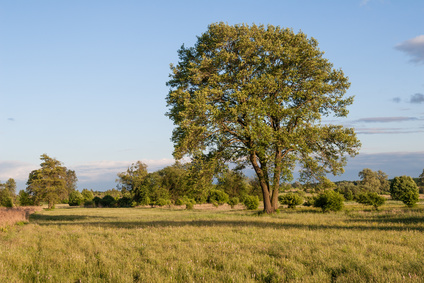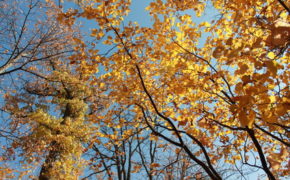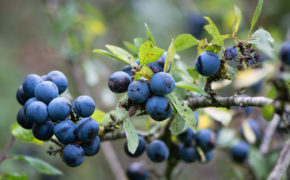
Get a quick no obligation quote It’s free and will only take a jiffy!
Alder Tree
For all you need to know about the alder tree, including tips on how to identify it and typical characteristics; how to spot common diseases and pests and the best way to take care of an alder tree, read on.
The alder tree is a conical shaped, UK-native deciduous tree. Also known as common alder, black alder and European alder and of the Latin Alnus glutinosa, this tree is known to grow to heights of 25 metres on average, and can live for 60 years.
Alder is connected to Franka alni, a bacteria that grows in the roots of the tree. This is a vital symbiotic relationship; the bacteria absorbs nitrogen from the air and helps the tree absorb it. The tree in return feeds the bacteria with sugars. The soil around the tree is enhanced as a result, with all the surrounding plants enjoying an abundance of nitrogten.
General Facts
| Known as | Alder, common alder, black alder, European alder |
| Latin name | Alnus glutinosa |
| Location | UK native, Europe, North Africa |
| Foliage | Deciduous |
| Lifespan | Up to 60 years |
Characteristics
| Height | Up to 25 metres |
| Spread | 4-8 metres |
| Appearance | A conical-shaped deciduous tree with noticeable winter catkins and bright green, rounded leaves |
| Leaves | Leaf buds are purple-grey and grow on long stems; the dark green, serrated edge leaves are 3-9cm long and leathery bearing a racket-shape. Leaf tips are pointed and usually indented. |
| Flowers | Catkins appear between February and April. Both male and female flowers appear on the same tree. The male catkins are yellow and long, whilst the female catkins are green and oval shaped and appear in groups of three to eight per stalk. |
| Fruit | Female catkins are wind pollinated and take on the appearance of small, cone-like fruits in the winter which open out to release seeds. |
| Found in | Close to rivers, ponds, lakes, marshes, streams and damp woodland. |
Conditions
| Ideal soil | Moist but well drained or poorly drained chalk, clay or loam |
| Soil pH | Acid, alkaline, neutral |
| Aspect | North, south, east or west facing |
| Exposure | Sheltered or exposed |
Threats
| Pests | Alder sucker, leaf-mining sawflies |
| Diseases | Phytophthora (alder dieback) |
Alder Trees and Wildlife
Alder is loved by a number of moth caterpillars such as the pebble hook-tip, the alder kitten and the blue bordered carpet moth. The winter catkins are appreciated by bees for their early nectar and pollen source, and birds such as the goldfinch, redpoll and siskin love the seeds of this tree.
Alder woodland is generally damp, which provides the perfect environment for fungi, lichens and mosses. The chequered skipper and pearl-bordered fritillary butterflies are great fans of alder woodland, as are certain species of crane fly. Otters make nests in alder roots.
Alder Tree Symbolism and History
The damp, sometimes swampy, alder woods were known for their mystifying atmosphere. The green dye that came from the flowers was used to create a camouflage for clothing worn by the likes of Robin Hood and the fairy kingdom. Alder wood turns a deep orange when cut which makes it look as though it is bleeding, hence many 0people fearing alder trees.
The Importance of Alder Trees
Alder wood has been historically used in boat making and also to create water pipes and sluice gates. Much of Venice in fact is built upon alder piles. This is because the wood is soft and porous and can withstand rot when exposed to underwater conditions.
Clogs were traditionally made from alder wood and legend has it that a few alder leaves placed in one’s shoes ahead of a long journey would keep the feet cool and fend off swelling.
Alder these days is a popular veneer and is also used to make pulp and plywood. It is also commonly used to make charcoal and gunpowder. The trees are widely used to boost the fertility of soil on brownfield sites and former industry wasteland, and are a real boon when it comes to mitigating floods.
Caring for an Alder Tree
Minimal pruning is acceptable for a mature alder tree, although younger specimens do benefit from formative pruning to promote a good shape. Regular thinning to promote air flow and light penetration is good practice so that the health of the tree is boosted.
It is important to get the timing and methods right when it comes to alder tree pruning. The best approach is to engage the services of a qualified tree surgeon. With the experience and skill they have built up over their years of operating, they will be able to provide a tailored pruning programme as well as advice on keeping the tree healthy and free from pests and disease.
For more about alder tree pruning, follow this link.
If you have an alder tree that needs professional care and attention, why not get in touch with T.H. Tree Services? As fully qualified and extensively experienced tree surgeons, we are able to offer detailed skill and knowledge across all aspects of alder tree care. For a free, no-obligation quotation, call us on 01268 642814 or get in touch here.
Had a fallen tree in the early hours of Monday morning, called for quote and the team had it cleared on the same day. Really good communication when the lads were onsite and did a great job. Lots of pride in their work shown with the thorough clear up. Would thoroughly recommend.
Thank you Stuart for your kind review. We were glad to be able to help you with your fallen tree. If there's anything else you need in the future, please don't hesitate to get in touch.








